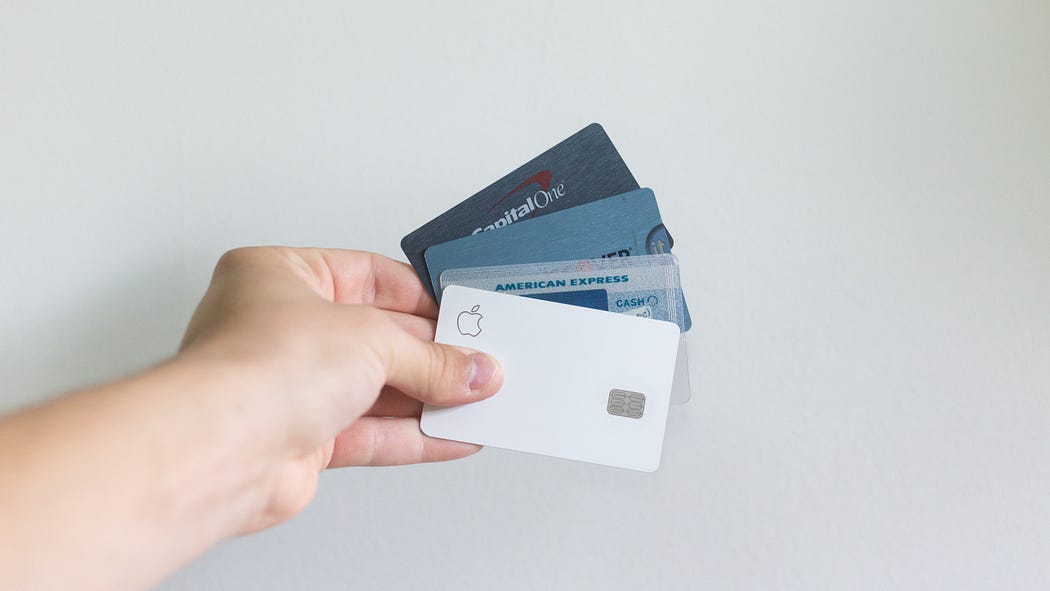Credit cards are one of the most useful things in your wallet, but when you’re just starting out, choosing the right credit card can seem like an intimidating task. With all of the different types of credit cards and different issuers, the choices can be overwhelming. While no perfect option exists, we’ve created a step by step guide to help you make that first selection.
We’ve also created a video tutorial to help walk you through the process of applying for your first credit card. You can find it here.
Step One: Fire up your laptop
To keep it really simple, the first thing you should do is go to the website of your primary bank and click the “credit cards” tab. From there, you want to navigate to the “no annual fee” or “student cards” section.
Step Two: Rewards or Cashback?
The next step is probably the hardest part of this whole process (and it’s not really even that bad). You’ll need to decide whether you want a rewards card, that earns points on purchases, or a cashback card that earns cold hard cash as a rebate. We’ve broken this down a little further below.
Rewards: Rewards cards earn the bank’s in-house points currency, or in the case of Aeroplan co-branding, Aeroplan points. They tend to have slightly better earn rates than cashback cards. This means that you get more points per dollar spent on certain purchases-but oftentimes you need to accumulate a considerable number of points to make a meaningful redemption, which you can’t really do without spending a substantial amount of money.
Cashback: Cashback cards earn cashback on your everyday purchases, which you can cash out to pay your credit card bill. The earn rates tend to be a little worse than the rewards card, but you do earn cash instead of rewards points which you may not be able to redeem for some time. In some cases there is a minimum amount required to cashout, or the payout comes at the anniversary of you getting the card.
For most, we’d recommend starting off with a cashback card, and then later adding some higher tiered rewards cards to your portfolio, although there may be some exceptions.
Step Three: What card?
Once you’ve decided what type of card you want, you’ll need to pick what specific card. Luckily this tends to be pretty easy, as banks only have one or two of each type that also don’t carry an annual fee. We’ve compiled our recommendations from each of the big five banks in the table below.
Some honourable mentions are the RBC ION+ Visa if you have a student banking package with RBC as it waives the $48 annual fee. If you fly Air Canada frequently, and bank with CIBC, you may also want to consider the CIBC Aeroplan Visa as it carries no annual fee and earns Aeroplan points on your spending.
Step Four: Fill out the application
Time for the fun bit, you can click the “Apply Now” button, and start to fill out the information asked in the questions. It may be helpful to have your prior year tax returns on hand, or a rough estimate of your income as you’ll be asked for it during the application. Additionally, you’ll need your SIN number, so it’s time to dig around for your SIN card, or take a peek at your tax return.
Once you’re done the application, review the information
Note down the reference number you’re given, as you may need it for contacting the bank about your application if they are any unforeseen issues (hopefully there won’t be)
Step Five: What now?
Congratulations! You’ve just taken the first step in building your credit history, and we’re very proud of you!
If it’s your first card, it’s possible they would want you to come into a branch for identity verification. Otherwise, you’ll likely receive an email within the messages folder on your bank account’s dashboard which will let you know if you’ve been approved within a few days.
If a week passes with no message, feel free to give them a call and mention the reference number you noted down earlier.
Once your card arrives in the mail, you’ll need to activate it with the instructions glued onto it. Then you’re good to go!
Remember to pay your bill off every month, and not spend money you don’t have, just because it’s a credit card. If you do this right, you should not have to pay a cent of interest in your life.
If you’re looking to improve your score, and want to learn how, read our article on the topic. If you have any other questions, feel free to comment them down below. We’ve also made a video to go along with this article to help walk you through the process, so feel free to give that a watch too if you need some help!
Thanks for reading, and we’ll see you in the next article ????


Leave a Reply